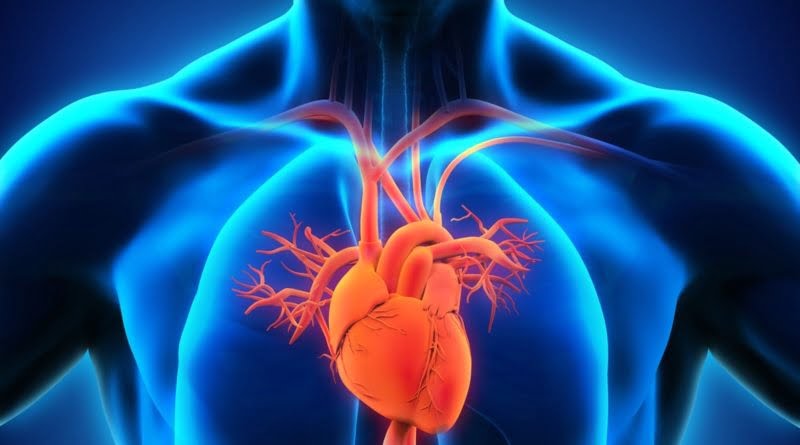Rickets in Children : Causes, Symptoms & Treatment 2025

Rickets in Children: Rickets is a condition seen in children that affects how their bones grow and develop. It is caused by a lack of vitamin D, calcium, or phosphorus. Rickets leads to softening and weakening of the bones, which can cause deformities and an increased risk of fractures. With treatment, most children fully recover from rickets. However, if left untreated, the bone deformities can become permanent, potentially leading to chronic issues later in life.
Disclaimer: This article is for educational purposes only. It is not a substitute for professional medical advice, diagnosis, or treatment. If you suspect your child may have rickets or any other health condition, consult a pediatrician or healthcare provider promptly.
What is Rickets?
Rickets is a disorder that causes weakening of the bones in children. It happens when growing bones fail to properly mineralize, leading to soft and pliable bones. Mineralization is the process by which hard minerals like calcium and phosphorus are deposited in the bone tissue. When this process is disrupted, bones do not form correctly.
The term “rickets” comes from the Old English word “wrickken,” which means “to twist”. This refers to the way rickets can cause skeletal deformities and malformed bones. Rickets used to be very common in places with little sunlight. While less common today, it still affects children worldwide.
How Rickets Affects Bones
Rickets affects the entire skeletal system, but certain areas are most impacted:
- Skull – Craniotabes, or softening of the skull bone, may occur. The skull may appear misshapen.
- Spine – Spinal curves and deformities like scoliosis are common. The spine may bow out, causing a protruding chest and rounded back.
- Pelvis – The pelvis may become flattened or misshapen.
- Legs – Bowing of the legs is a classic sign of rickets. The femurs (upper leg) and tibias (lower leg) often bow outward.
- Ribs – The ribcage may sink in, called a rachitic rosary.
Without treatment, these skeletal deformities can become permanent. Bones must be straightened while the child is still growing to prevent complications.
Causes of Rickets
Rickets is caused by problems with the bone mineralization process. Interruption of this process leads to the bone abnormalities seen in rickets. The most common causes include:
Vitamin D Deficiency
The most common cause of rickets is a lack of vitamin D. Vitamin D helps the body absorb calcium from food and deposit it into bones. With inadequate vitamin D, this process is disrupted.
Children can develop vitamin D deficiency when they do not get enough from sun exposure or their diet. Breastfed infants are at higher risk since breastmilk is naturally low in vitamin D. Babies with darker skin are also more prone to vitamin D deficiency.
Calcium Deficiency
A lack of calcium in the diet can also lead to rickets. If the body cannot absorb enough calcium, bones cannot mineralize properly. A diet low in calcium-rich foods puts children at risk of rickets.
Phosphorus Deficiency
Phosphorus works with calcium to mineralize bones. When phosphorus levels are inadequate, mineralization is impaired. Phosphorus deficiency is rare but can be seen in malnourished children or with certain medical conditions.
Genetic Disorders
Some inherited disorders affect the kidneys and small intestine’s ability to process vitamin D. Children with these conditions often develop rickets. Examples include hypophosphatemic rickets, vitamin D-dependent rickets, and Fanconi syndrome.
Symptoms of Rickets
The major symptoms of rickets involve bone deformities and bone pain. Signs and symptoms may include:
- Bowing or bending of legs, arms, spine, or ribcage
- Wrist and ankle swelling
- Craniotabes – softening of the skull
- Delayed growth and short stature
- Muscle weakness
- Skeletal pain, tenderness
- Frequent fractures
- Dental issues – delayed tooth eruption, defects in enamel
- Muscle cramps or spasms
- Skeletal deformities – pigeon chest, spinal curves, protruding forehead, rachitic rosary
In the early stages, the only symptoms may be irritability, failure to thrive, and delays in walking or teething. As rickets progresses, the bone deformities become more apparent. Without treatment, the deformities can become severe and permanent.
Diagnosing Rickets
If rickets is suspected, the pediatrician will take a full medical history and perform a physical exam. Diagnostic tests may include:
- Blood Tests – Check calcium, phosphorus, alkaline phosphatase, and vitamin D levels. Elevated alkaline phosphatase indicates increased bone formation as the body tries to compensate. Low vitamin D confirms deficiency.
- X-rays – Bones X-rays reveal characteristic findings like metaphyseal fraying and cupping, widening of the growth plate, and bowing deformities.
- Bone density scan – Measures bone mineral density to assess bone strength. Useful for monitoring.
- Genetic testing – Identifies mutations linked to genetic forms of rickets.
Based on test results and exam findings, the doctor can definitively diagnose rickets. Other bone disorders like osteogenesis imperfecta may have similar symptoms.
Rickets Treatment and Prevention
The main goals of treating rickets are to correct the underlying deficiency and improve bone mineralization. With prompt treatment, deformities and bone symptoms typically resolve. Treatment approaches include:
Vitamin D Supplementation
Children with nutritional rickets are prescribed high-dose vitamin D either orally or by injection. Recommended daily intake is 400-1000 IU. Improvement is usually seen within weeks. Lifelong lower-dose supplementation may be needed in severe cases to prevent recurrence.
Calcium Supplements
Extra calcium intake helps bones mineralize properly. Children need sufficient calcium to work with the increased vitamin D. Supplements are given if dietary intake is inadequate.
Dietary Changes
A diet high in calcium, phosphorus, and vitamin D can help restore bone mineralization. Foods like milk, yogurt, cheese, leafy greens, beans, tofu, and fatty fish are encouraged. A dietician can provide detailed recommendations.
Bracing or Casting
For children with severe bowing or other deformities, bracing or casting may straighten bones. This lets bones grow straighter and prevents permanent issues. Physical therapy also helps improve bone alignment and strength.
Surgery
If bone deformities do not improve with other treatments, orthopedic surgery may be done. It can reshape and realign bones while a child is still growing.
Underlying Condition Management
For kids with inherited forms of rickets, treating the underlying disorder is key. Medications, dietary changes, and supplements can improve bone health. Lifelong treatment and monitoring are often required.
Prevention of Rickets
Rickets can be prevented through adequate intake of vitamin D and calcium. Recommendations include:
- Vitamin D for breastfed infants – Unless supplemented, breastmilk does not provide enough vitamin D. All breastfed babies should receive 400 IU of vitamin D daily.
- Vitamin D fortified foods – Choose cereals, breads, milk, and juices fortified with vitamin D.
- Take vitamin D supplements – Children who get inadequate sun exposure require 400-600 IU of vitamin D per day. Those with absorption issues or obesity may need higher doses.
- Eat calcium-rich foods – Dairy, leafy greens, tofu, and beans provide calcium for bone health.
- Moderate sun exposure – 10-15 minutes per day allows skin synthesis of vitamin D. But avoid excessive exposure to prevent skin damage.
- Routine screening – The Pediatrician should check vitamin D and calcium levels to catch deficiencies early.
Following these guidelines provides growing children with the nutrients needed for proper bone development, allowing prevention of rickets.
FAQs about Rickets in Children
Are rickets serious?
Yes, rickets is a serious condition. Without treatment, it causes permanent skeletal deformities, growth problems, fracture risks, and chronic bone pain. Prompt diagnosis and management are key to preventing complications.
What population is most at risk?
Rickets occurs most often in:
- Infants 4-24 months old
- Children who are exclusively breastfed
- Babies born prematurely
- Darker-skinned children
- Children in northern climates with less sun exposure
- Malnourished children or those with nutrient absorption issues
Can adults get rickets?
Yes, but it is very rare. Some cases are seen in pregnant women who are severely vitamin D-deficient. Elderly adults with osteomalacia (soft bones) may initially have had undiagnosed rickets as children.
Is rickets contagious?
No, rickets itself is not contagious. However, vitamin D deficiency is very common in children worldwide. Genetic factors that predispose to rickets can run in families. But the condition itself does not spread from person to person.
How common is rickets today?
In developed countries, rickets is now quite rare due to vitamin D fortification of foods. Rates fell from over 50% in the early 1900s to nearly zero today. However, it remains common in developing nations, especially in Africa and Asia. Estimates range from 5-10% of children in these regions.
How are ticks diagnosed?
Diagnosis involves blood tests checking vitamin D, calcium, phosphorus, and alkaline phosphatase levels. Characteristic X-ray findings also confirm rickets. Bone scans and genetic testing may be done in ambiguous cases.
What foods provide vitamin D?
Good dietary sources include fatty fish, egg yolks, fortified milk and juices, beef liver, cheese, and mushrooms exposed to UV light. Supplements are often needed for adequate intake.
Can rickets be cured permanently?
Yes, with prompt and proper treatment, children can fully recover from rickets without permanent deformities. Lifelong maintenance with supplements and a balanced diet can prevent recurrence.
Conclusion
Rickets is a preventable childhood disease that causes weakening and malformation of bones. While now rare in developed countries, it remains common in developing regions with high rates of malnutrition. Vitamin D deficiency is the predominant cause, but inadequate calcium or phosphorus can also lead to rickets.
Diagnosing rickets early is key to avoiding permanent skeletal deformities and short stature. Treatment focuses on correcting the underlying nutritional deficiency. Vitamin D and calcium supplementation facilitate proper bone mineralization so bones can grow and develop normally.
Promoting adequate sun exposure, fortified foods, and routine screening allows the prevention of rickets. With proper nutrition and monitoring, children can achieve optimal bone health and development. Raising awareness and access to preventative measures can greatly reduce the burden of rickets worldwide.



